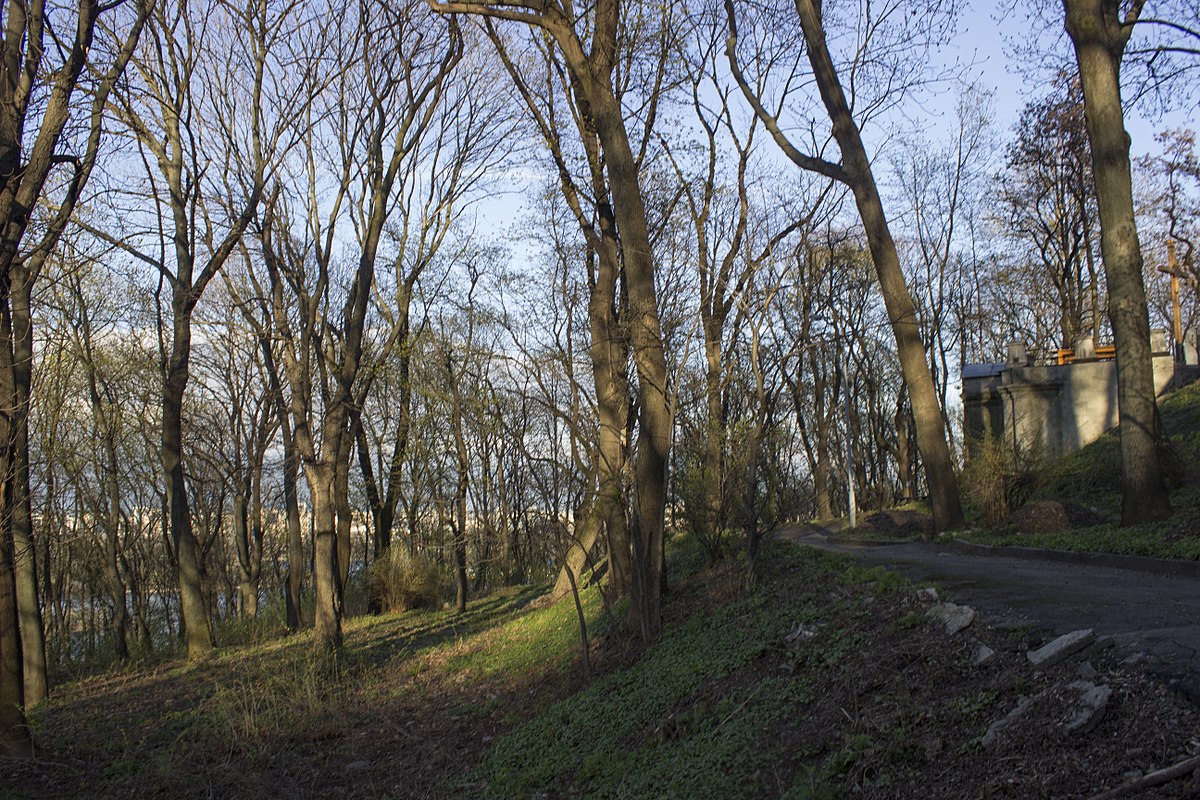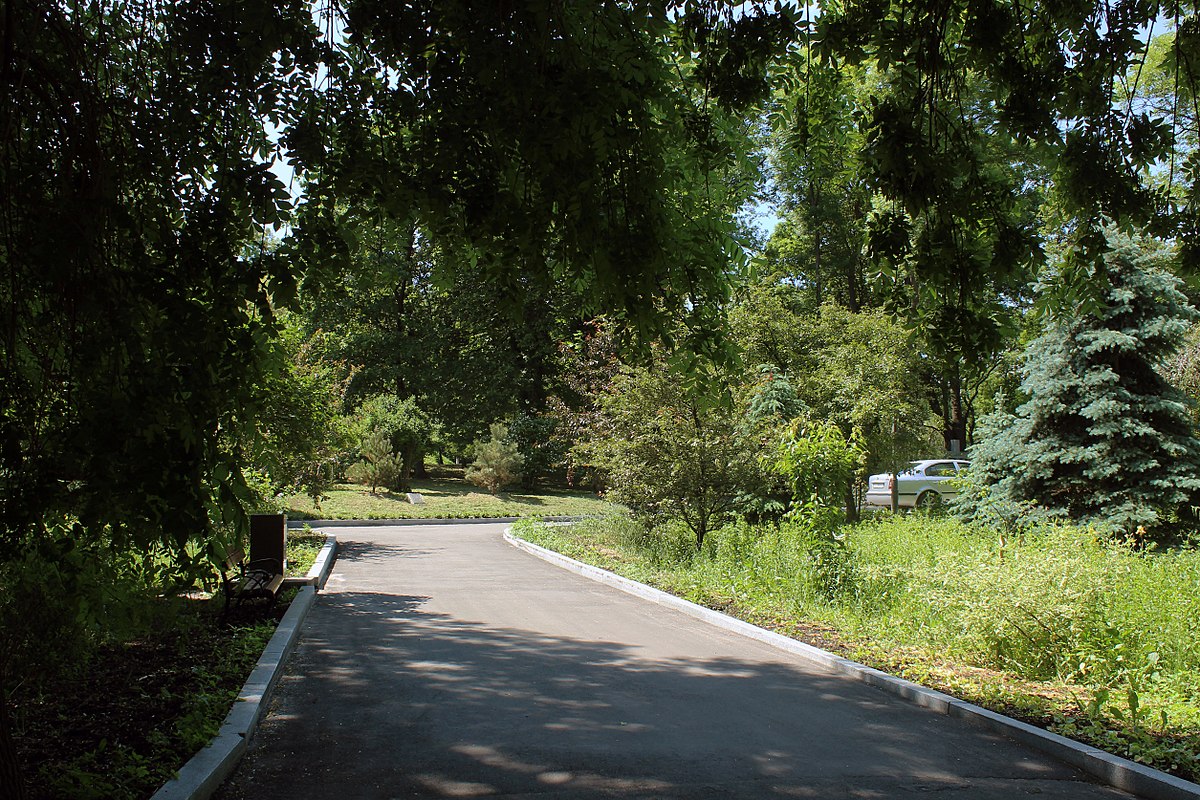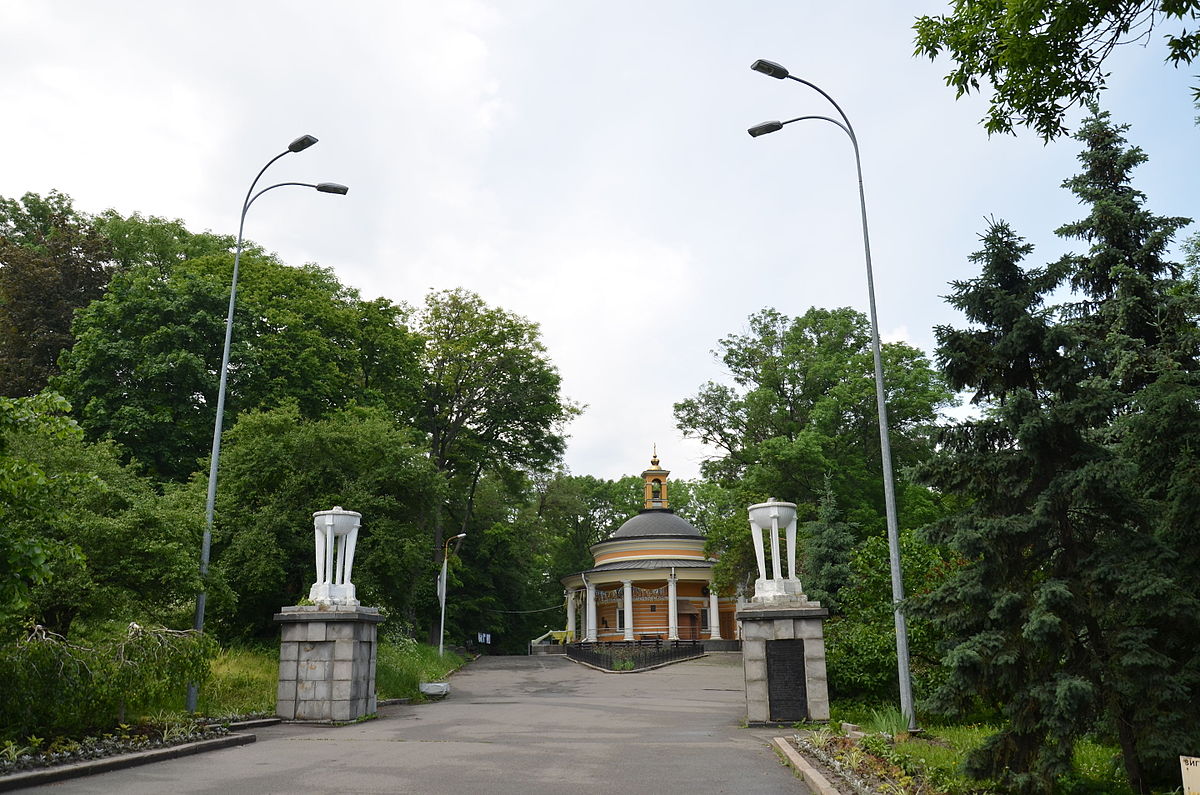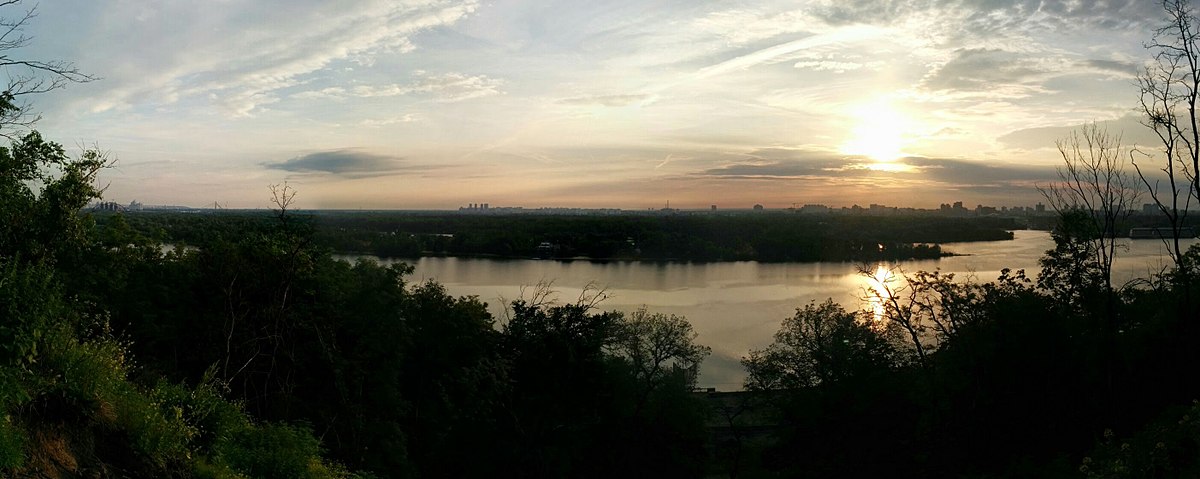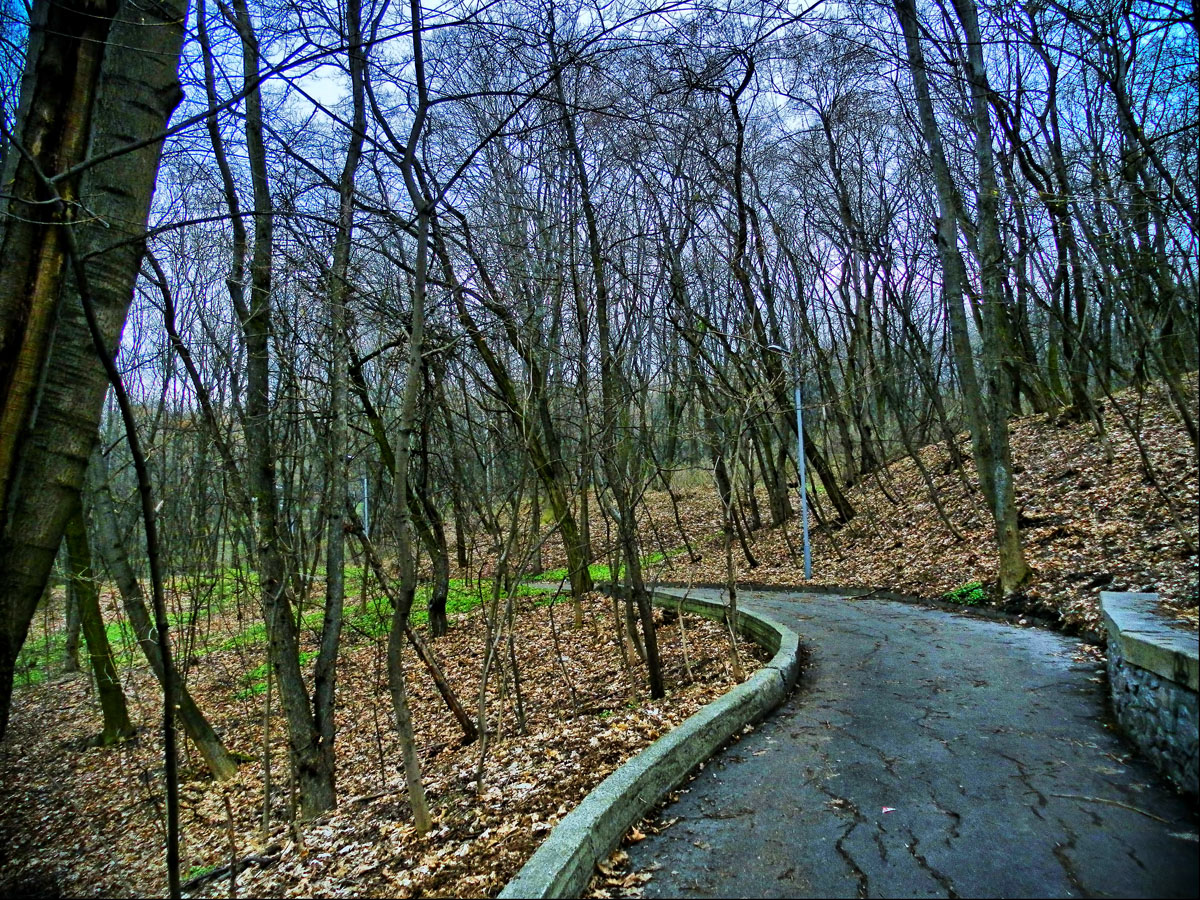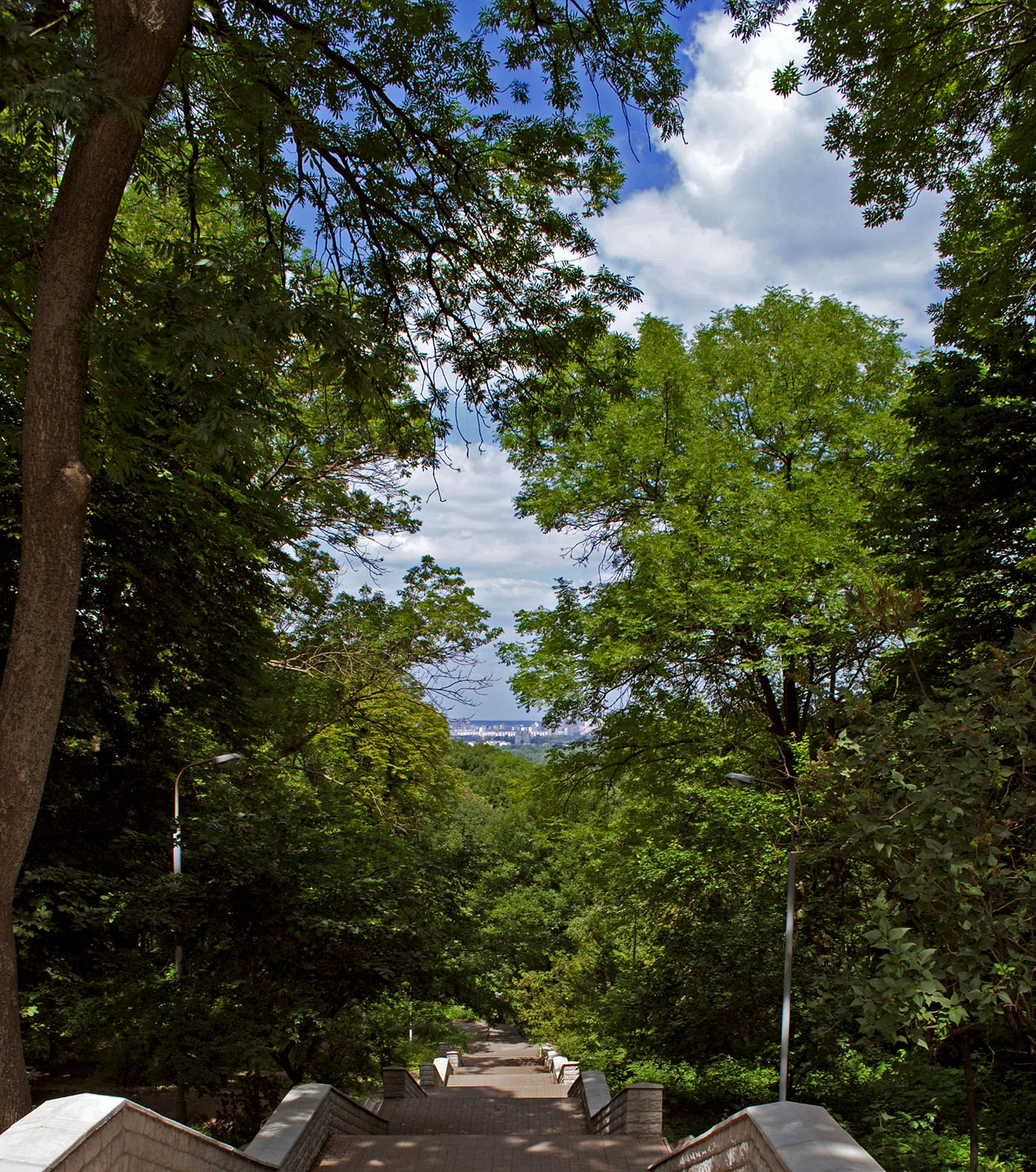Askold’s grave is a tract on the right bank of the Dnieper in Kyiv, where, according to legend, the Kiev ruler Askold was buried. Now it is part of the park complex, broken in 1936 on the site of the ancient Ugric tract. Adjacent to the parks of Eternal Glory, Mariinsky, City and Kreshchaty. The Askold’s Grave Park has an area of 26 hectares, and green spaces are represented by sharp-leaved maple, small-leaved linden, horse chestnut, warty birch and valuable decorative species of bushes. The total length of the park is more than 2 kilometers in a straight line – taking a walk here, you can admire the Dnieper embankment and the left bank of Kyiv. In Askold’s Grave Park there is Green Theater and Church of St. Nicholas, in front of which the alley of Heroes of Krut begins, on which monument to Leonid Bykov, and before the alley there is Andrei the First-Called Square on which erected a monument of the same name and a temple-chapel.
A quite reasonable question arises about such a picturesque place – why was it not built up during the Soviet era, or was a full-fledged park not equipped here? All due to the fact that from 1786 to 1935 there was a cemetery around the site of the park, where the burial places of many eminent Kyivans were located. At the beginning of the 20th century, this cemetery was considered a particularly prestigious necropolis. Numerous artistic tombstones and imposing crypts were built here.
In 1918, young men who fell in battle with the Bolsheviks near the Kruty station were buried here (hence the name of the alley, which is located nearby). This is reminiscent of a wooden cross with a stone memorial plate, installed in the park in 1995. At the end of 1934, the Kiev city council decided to destroy the cemetery under the pretext that it interfered with the creation of the park, although the park itself did not appear afterwards. Single graves were moved, the rest were barbarously destroyed in 1935-1936. Some of the tombstones were handed over to the Art Institute for students to study.
During the occupation of Kyiv, there was a German cemetery on Askold’s grave, which was liquidated after the liberation of the city in 1944. After 1945, Askold’s grave became one of the burial places for soldiers and officers who died during the liberation of Kyiv from the German invaders. In 1957, their ashes were transferred to Park of Eternal Glory.


